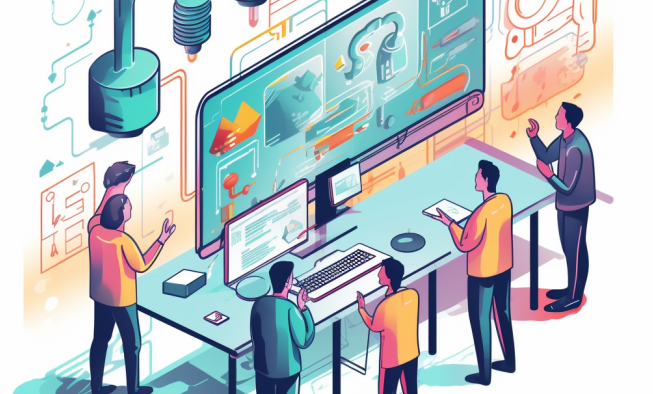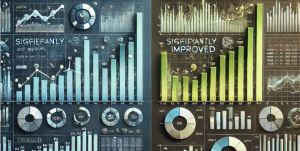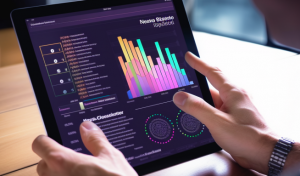In the fast-paced world of entrepreneurship, accurate financial forecasting can mean the difference between thriving and merely surviving. As technology continues to evolve, a new tool has emerged that’s revolutionizing how entrepreneurs predict and plan for their financial future: AI-powered financial forecasting software. This innovative technology is not just changing the game; it’s redefining it entirely.
The Power of AI in Financial Forecasting
Artificial Intelligence (AI) has made significant strides in recent years, and its application in financial forecasting is nothing short of transformative. Unlike traditional forecasting methods that rely heavily on historical data and human intuition, AI-powered systems can process vast amounts of information from multiple sources, identify complex patterns, and generate highly accurate predictions in real time.
Dr. Sarah Chen, a leading expert in AI and finance, explains, “AI algorithms, particularly machine learning and deep learning models, can analyze market trends, consumer behavior, and economic indicators simultaneously. This allows for a level of precision and adaptability that was previously unattainable.”
For entrepreneurs, this means more than just improved accuracy. It translates to faster decision-making, reduced risk, and the ability to spot opportunities that might otherwise go unnoticed.
Key Features Entrepreneurs Should Look For
When considering AI-powered financial forecasting software, entrepreneurs should prioritize certain features that can provide the most value for their business:
- Data Integration: The ability to seamlessly pull data from various sources, including accounting software, CRM systems, and market databases.
- Predictive Analytics: Advanced algorithms that can forecast future trends based on historical data and current market conditions.
- Scenario Modeling: Tools that allow users to create and compare different financial scenarios, helping to prepare for various outcomes.
- Real-Time Updates: Continuous data processing and forecast adjustments as new information becomes available.
- Customizable Dashboards: User-friendly interfaces that present complex data in easily digestible formats.
- Machine Learning Capabilities: Systems that can learn and improve their accuracy over time based on new data and outcomes.
- Natural Language Processing: The ability to generate written reports and insights from numerical data.
Jake Thompson, CEO of FinTech startup Predicto, adds, “Look for software that not only provides accurate forecasts but also offers actionable insights. The best AI tools don’t just tell you what might happen; they suggest what you should do about it.”
Real-World Success Stories
The impact of AI-powered financial forecasting on businesses can be substantial. Take the case of Sarah Nguyen, founder of the e-commerce platform GreenLeaf. By implementing an AI forecasting system, she was able to optimize inventory levels, reducing carrying costs by 22% while simultaneously increasing sales by 15%.
“The AI system predicted seasonal demand fluctuations with incredible accuracy,” Nguyen shares. “We were able to stock up on trending items just before they took off, giving us a significant edge over competitors.”
Another success story comes from Marcus Blaine, CEO of SaaS company CloudSolutions. Blaine credits AI-powered forecasting for helping his company navigate the uncertain waters of the COVID-19 pandemic. “The software allowed us to model various scenarios and adjust our strategy in real time. As a result, we not only survived but grew our revenue by 30% during one of the most challenging economic periods in recent history.”
These examples illustrate the tangible benefits that AI-powered forecasting can bring to businesses of all sizes and sectors.
Choosing the Right Software for Your Business
With a growing number of AI-powered financial forecasting tools on the market, selecting the right one for your business can be challenging. Here are some factors to consider:
- Scalability: Ensure the software can grow with your business.
- Integration Capabilities: Check if it can easily connect with your existing systems.
- User-Friendliness: Look for intuitive interfaces that don’t require extensive training.
- Customization Options: The ability to tailor the software to your specific industry and business model is crucial.
- Support and Training: Consider the level of customer support and resources available.
- Pricing Model: Evaluate whether the cost aligns with your budget and the potential ROI.
It’s also worth noting that some business plan professionals specialize in implementing and optimizing these AI tools for specific industries. Their expertise can be invaluable in ensuring you get the most out of your chosen software.
Future Trends and Opportunities
As AI technology continues to advance, the future of financial forecasting looks increasingly sophisticated. Some emerging trends to watch include:
- Generative AI: Systems that can not only predict outcomes but also generate strategic recommendations.
- Blockchain Integration: Enhancing data security and enabling more transparent financial tracking.
- Quantum Computing: The potential for even more complex and accurate financial models.
- Emotional Intelligence AI: Systems that can factor in human behavior and market sentiment for more nuanced predictions.
- Augmented Reality Interfaces: Making complex financial data more accessible and interactive.
David Park, a venture capitalist specializing in AI startups, advises, “Entrepreneurs who stay ahead of these trends will be best positioned to capitalize on the next wave of financial technology. The key is to remain adaptable and open to new possibilities.”
Conclusion: Embracing the Future of Financial Planning
AI-powered financial forecasting is more than just a trend; it’s a fundamental shift in how entrepreneurs can approach financial planning and decision-making. By leveraging the power of AI, businesses of all sizes can access insights and predictive capabilities that were once the domain of large corporations with extensive resources.
As we’ve seen from real-world examples, the benefits can be substantial: improved accuracy, reduced risk, and the ability to seize opportunities faster than competitors. However, it’s important to remember that AI is a tool, not a magic solution. Its effectiveness still relies on quality data input and skilled interpretation of its outputs.
For entrepreneurs willing to embrace this technology, the rewards can be significant. As Jake Thompson puts it, “AI-powered forecasting doesn’t just help you see the future; it helps you shape it.”
In an increasingly data-driven business world, those who harness the power of AI for financial forecasting will be better equipped to navigate uncertainties, capitalize on opportunities, and drive sustainable growth. The future of entrepreneurship is here, and it’s powered by AI.









